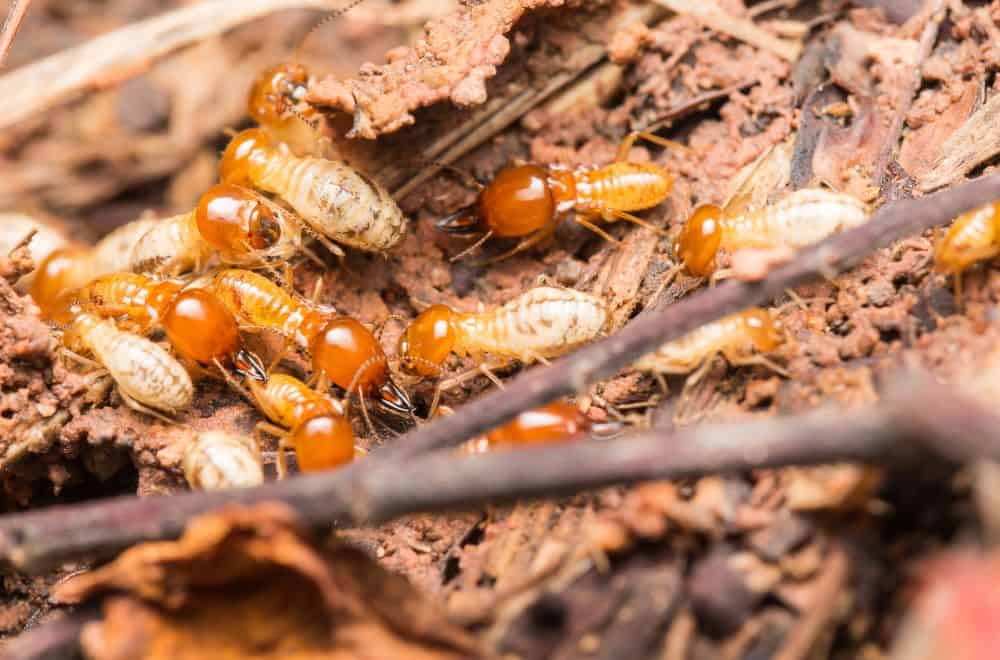Due to their fearsome reputation as incredibly destructive pests, finding termites in your yard is something that many homeowners dread – but is it so bad if you just see one or two of these tiny insects? And what should you do if you find them?
In this post, we examine questions such as these and more as we discuss finding termites in your yard.
What are termites and how can you spot them?
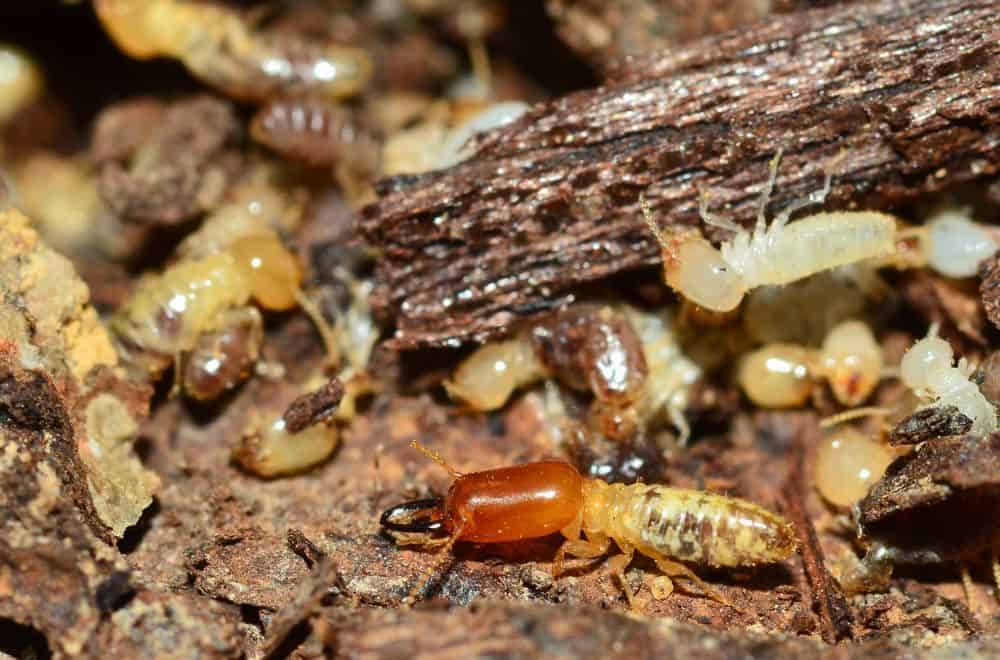
Let’s start right at the beginning – what exactly are termites?
Termites are a type of insect that lives in colonies sometimes numbering many thousands of individuals.
Like ants, termite colonies are divided into various “castes” like workers and soldiers, and at the center of each colony is a breeding pair, the “king” and the “queen”. These two termites are responsible for producing all the other termites in the colony.
However, although similar to ants, they are only distantly related to them, being more closely related to cockroaches. However, as we’ll see in a moment, a termite infestation is considered far worse than an ant infestation due to the amount of damage they can cause.
Termites look superficially similar to ants, so if you spot what you think is a termite in your yard, you need to make a positive identification. Here are some of the things to look out for to distinguish them from ants.
-
Size
The workers of most termite species are about a quarter of an inch to half an inch in length.
-
Color
Termites are lighter in color than ants. While ants are usually black or red, termites range from light brown to white.
-
Body shape
Termites have no “waist” while ants have a noticeable narrow “waist”.
-
Antennae
Termites have straight antennae, but ants have bent antennae.
-
Wings
If you see flying termites, they will have two pairs of wings that are the same length and twice as long as their bodies. Ants also have two pairs of wings, but the front ones are longer than the rear ones, and both pairs are shorter relative to their bodies.
-
Subterranean and nocturnal
Termites are subterranean and don’t usually wander about above ground unless their nest is disturbed. This means if you see insects crawling around above ground during the day, they are more likely to be ants than termites.
However, termites may emerge at night to forage, so it’s possible to see them above ground after nightfall.
Ants, on the other hand, can be active above ground at any time.
Why are they a problem?
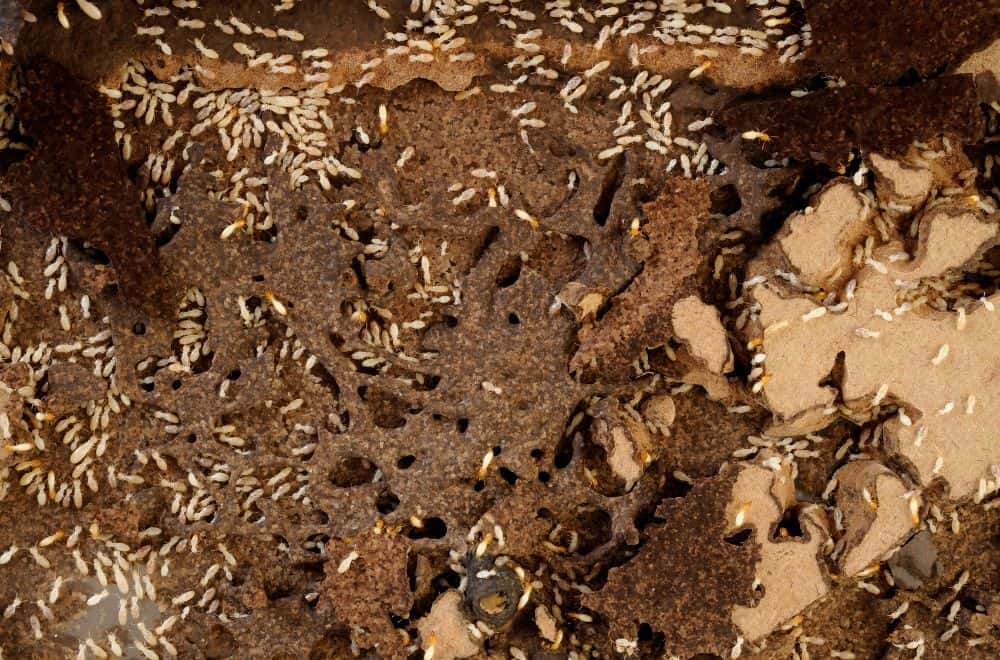
So now we know how to spot termites, but why are they a problem? How is it that seeing even one such insect can strike such fear into the hearts of homeowners everywhere?
The reason is that termites are an incredibly destructive species.
In the “wild”, they perform an important role feeding on dead wood and vegetation, but if they take up residence near your home, it’s only a matter of time before their scouts locate the wooden parts of your house and begin devouring them.
Furthermore, termites are known as the “silent destroyer” because they can be present in your home gnawing into anything made of wood, and you won’t even know it until the destruction is already advanced.
This is because they eat away at wood from the inside, and once they get started, they work day and night, so extensive damage can be done before you realize.
Is it a big deal if you find termites outside?
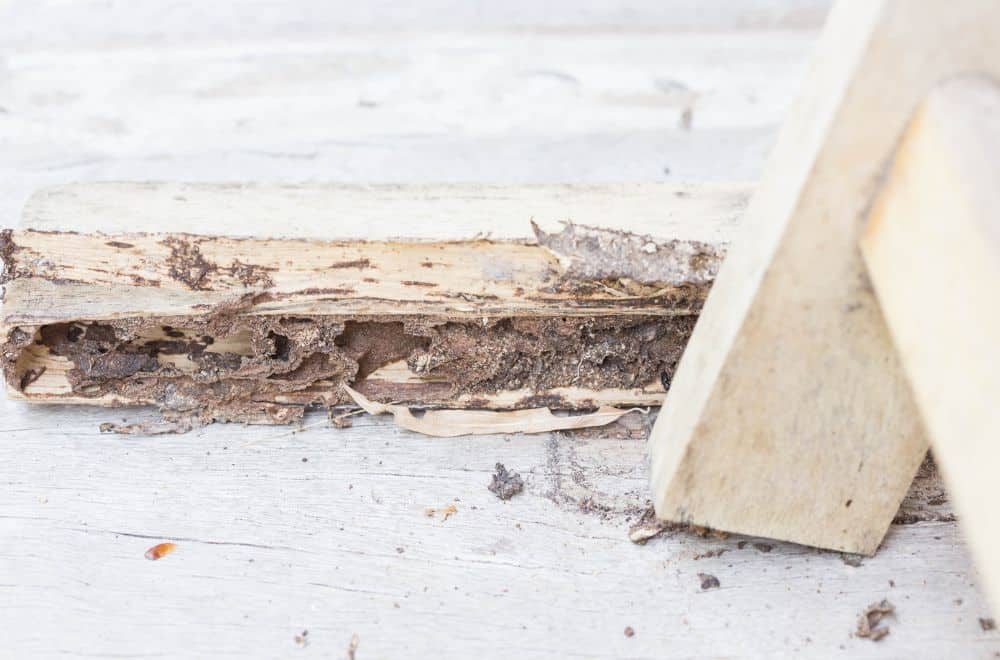
But is it such a big problem if you find one or two termites in your yard?
The answer to this question is, it depends.
If the termites have built a nest on or near your property, they may not yet have invaded your home and may still be feeding on whatever they can find outside.
However, finding termites in your yard may be an indication that you also have them in your home, so if you see termites in your yard – and you are sure they are not ants or anything else, there are two things you need to do.
The first is to check your home thoroughly for signs of an infestation.
And the second is to exterminate the termites outside to make sure they don’t have a chance to invade your home.
What to look for when inspecting your home
Although termites can be hard to spot, there are some tell-tale signs to look out for that can indicate an infestation. Here’s what to check for.
1. Mud tubes
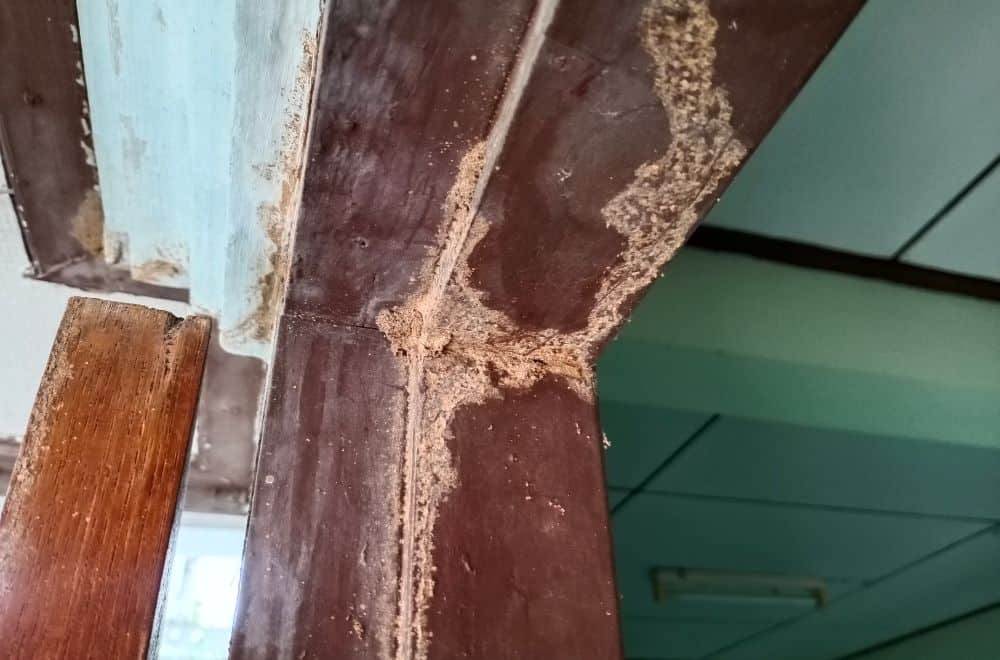
The biggest giveaway – and something you will usually notice before carrying out a detailed inspection unless they’re located somewhere you don’t often go – is termite mud tubes.
These tubes are structures, about the width of a pencil, that termites construct to protect themselves.
You may see them snaking along walls or ceilings, and they can sometimes even be seen hanging from ceilings.
They are unmistakable if you know what you’re looking for, and if you see them, it means you already have a serious infestation.
2. Termite poop
Termite poop is less obvious, but it’s also easy to spot if you know what you’re looking for.
Termite droppings are tiny, but if you notice course, granular dirt on the floor near holes in anything made of wood, it’s an indication that termites are burrowing into the wood and leaving their excrement behind.
3. Bubbles in wallpaper
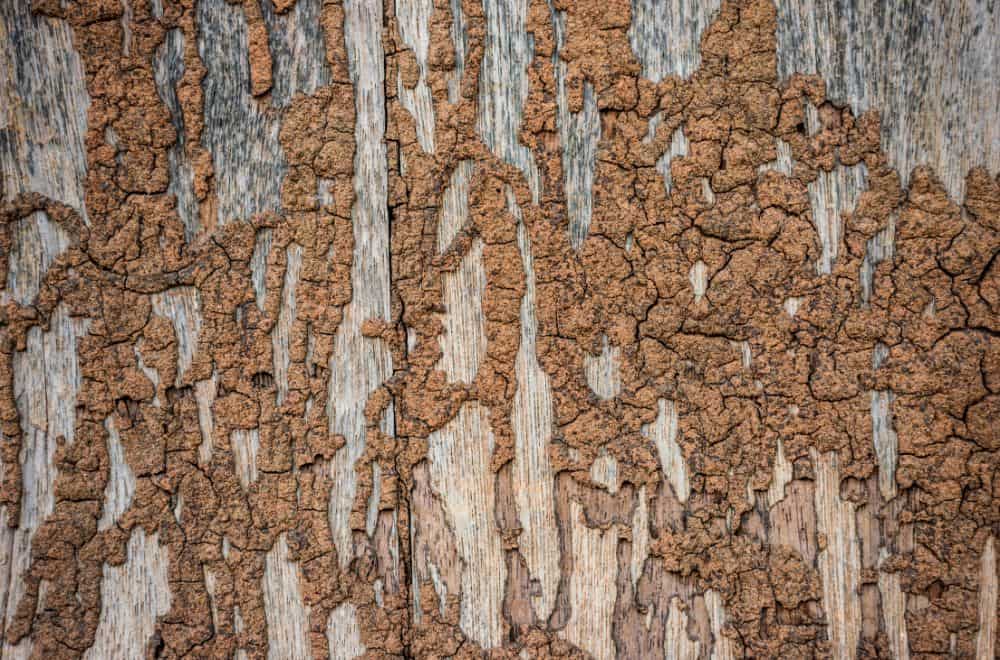
Termites burrow into the wood between your walls, taking moisture with them. This can then cause your wallpaper to bubble.
This is just the kind of sign that’s easy to miss if you’re not looking for termites, but if you know to look for it, it’s a clear sign there’s a problem.
4. Hard to open doors or windows
Similarly, termites burrowing into doors or windows can increase moisture levels in the wood, which may make doors or windows difficult to open.
Again, you may not have given this much thought before – but when you realize termites might be responsible, it’s something to pay attention to.
5. Hollow-sounding walls
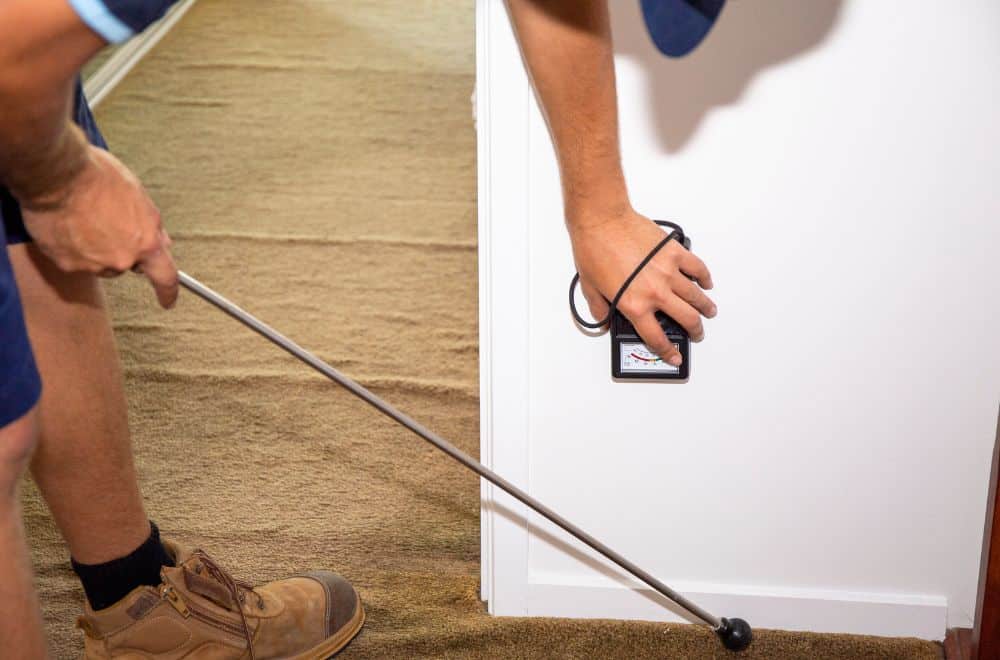
If you suspect termites are already at work in your home, try walking around and tapping different sections of wall in your home. Walls that have been burrowed into will have an unusually hollow sound, and this can be a clear sign that you have a problem.
6. Termite wings
At certain times of year, flying termites leave the nest to mate, after which the fertilized females head off in search of somewhere to start a new colony.
At these times of year, you may come across discarded termite wings on the floor, which can also tell you termites have entered your home.
How to get rid of termites in your yard
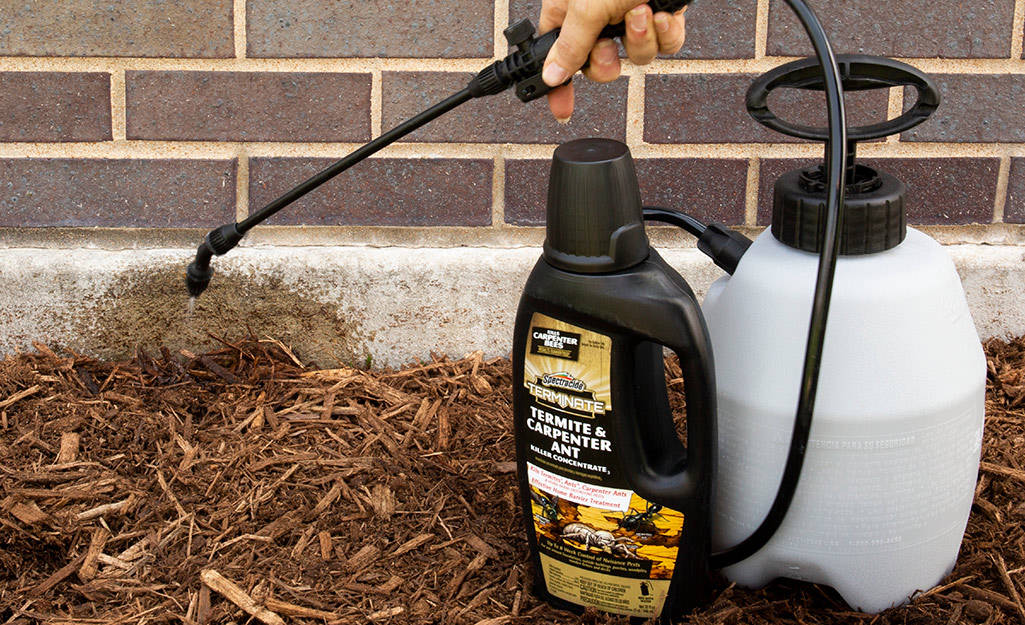
Image Credit: homedepot
If you inspect your house and are satisfied that termites have not yet infested the building, you can turn your attention to those in your yard – because even if they haven’t yet attacked your home, it could only be a matter of time, so don’t give them the opportunity.
When trying to exterminate a termite colony, it’s no good just picking off a few workers. These individuals are insignificant, and the king and queen will just continue to replenish them.
Instead, you need to attack the whole colony and ultimately take out the breeding pair.
Here are your options.
1. Termite bait
Termite bait is among the most effective ways to kill a termite colony.
You just lay the bait somewhere the termites will find it, and they will be attracted to it as a source of food.
However, the food also contains deadly poison, so when they take it back to the nest, it will kill any termites that eat it, including the king and queen.
With no king or queen to replenish the workers, the rest of the colony will quickly die.
2. Boric acid
Boric acid is a powder that’s largely harmless to humans but lethal to termites. Simply sprinkle the powder in the area where you think the termite nest is – or mix it up with water and pour it in.
Continue to treat the area in this way every few days until the infestation has ended.
3. Termiticide
Termiticide is a special type of insecticide formulated to kill termites. You can apply it to areas around where you think the termite nest is located, and it will gradually kill them all.
This is because termites that come into contact with it will carry the poison back to the nest, killing the king and queen along with all of the other termites found there.
4. Nematodes
Nematodes are microscopic parasitic organisms that kill termites. You simply spread them over the infested area, and they will do the rest of the work.
They will also help prevent termites from coming back since they will remain in the soil and attack any termites that return to the area.
What to do if you find termites in your home
If you inspect your home and find termites are already present, you are best off calling in the pros immediately to give you advice about how to get rid of them as quickly as possible.
Among the most unwelcome of guests
Termites are among the most unwelcome of guests and are the stuff of nightmares for anyone who owns a home.
If you find one in your yard, it doesn’t necessarily mean the end of the world – but you shouldn’t take it lightly either because it could be the sign of a much more serious problem.
